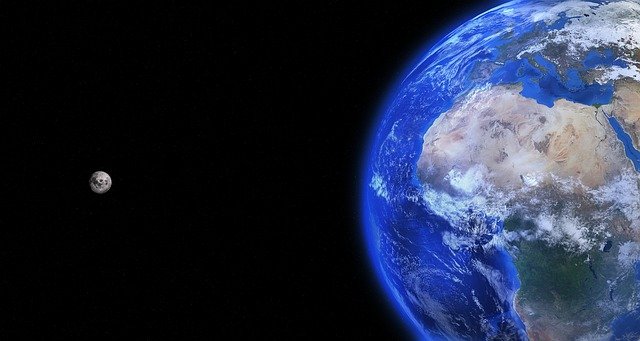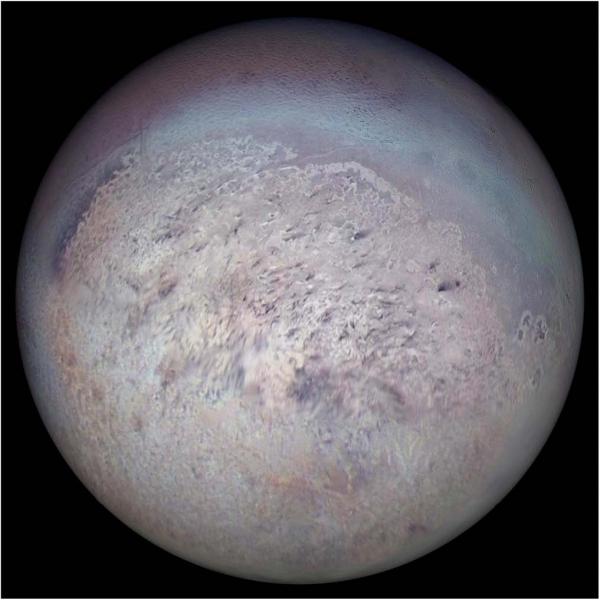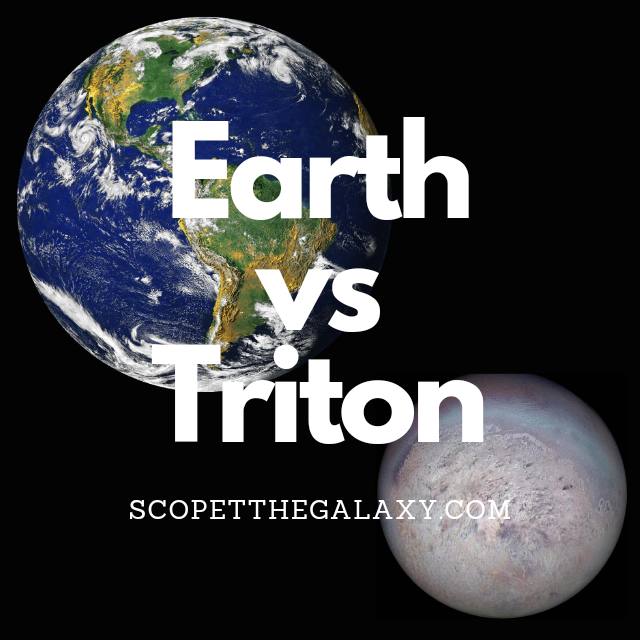*This post may contain affiliate links. This means we may make a commission if you purchase an item using one of our links*
The main differences between Earth and Triton is that Earth is a terrestrial planet whilst Triton is a natural satellite, Earth is the only entity in solar system that can support intelligent life whilst Triton can not, Earth is far bigger with a diameter of 12,742km whilst Triton has a diameter of 2,706km and Earth has a magnetosphere while Triton does not.
There are various other differences between the two so, continue reading for a more detailed look at each entity along with their similarities and differences below.
What Is The Planet Earth?
Table of Contents

Our home planet Earth is the 3rd farthest planet from the Sun, made up of a mixture of water and solid rock like objects, and is the only entity in our solar system known to allow intelligent life forms like ourselves to exist.
Earth’s distance of 152 million km from the Sun has allowed it to remain within the goldilocks zone and as a result, the planet has been able to thrive for millions of years. It orbits the Sun in a circular pattern, much like all the other planets, has only one natural satellite which would be the Moon and is a terrestrial planet to boot.
In regards to its diameter, Earth is the 5th largest planet with a diameter 12,742km.
Earth’s temperature ranges based on the region you’re located where it can be from as low as -94 degrees Celsius in Antarctica to as high as 50 – 55 degrees Celsius in Tunisia.
As for the planets composition, it consists of the crust, the mantle, the outer core and the inner core, where the inner core is the hottest element within the Earth reaching temperature in excess of 5,200 degrees Celsius.
In regards to some of its most unique features, Earth is around 71% water, has an atmosphere consisting mostly of oxygen and nitrogen that is also made up of 5 main layers, with the highest to lowest being the troposphere, stratosphere, mesosphere, thermosphere and exosphere.
A day on Earth is 24 hours and an orbital cycle around the Sun takes 365 days to complete. It’s axial tilt is more distinct at 23.5 degrees to the right.
What Is The Moon Triton?

Triton is the largest moon of Neptune, whose most unusual feature is its retrograde orbit. Triton is the only major moon in our solar system which orbits in the opposite direction of its planet’s rotation.
First discovered on 10th October 1846 (just 17 days after the discovery of its planet, Neptune) by British astronomer William Lassell, “Triton” comes from a merman in Greek myth; a name which perhaps stems from the composition of this faraway moon.
The diameter of Triton is approximately 2,706km, making it a similar size to Earth’s moon. However, we know that its mass is far less than the first estimates suggested because data from Voyager showed that the surface is icy and highly reflective, a less dense composition than the dark surface of our moon.
This icy surface has resulted in ice based natural satellite displaying temperatures in the region of – 235 degrees Celsius.
This lower density stems predominantly from the water-ice interior encasing a denser rock core. Still, the mean density of 2.06 grams per cubic cm remains higher than that of any of Saturn’s or Uranus’ moons. In addition, Triton holds more than 99.5% of the mass of everything that orbits the planet Neptune and its total mass is greater than every smaller satellite in the solar system combined.
Scientists think that Triton may be an object from the Kuiper Belt that Neptune’s gravity captured millions of years ago. This is because it shares many similarities with the dwarf planet Pluto – the best-known world within the Kuiper Belt.
This frozen world is a land of geological oddities with craters and a collection of depressions and ridges known as cantaloupe terrain. The geysers found on this moon shoot plumes of nitrogen as high as 8km high, which creates a thin atmosphere of nitrogen.
In around 3.5 billion years, Triton’s orbit will travel too close to Neptune, and the planet’s gravitational pull will break the moon apart, creating a ring system.
Similarities Between Earth And Triton
Triton and Earth do have their odd few similarities, which in this case includes the below:
- Both have a hotter central core.
- Both have an atmosphere and a rocky surface.
- Both are a spherical shape.
- Both are part of the same solar system.
- Both have no rings surrounding them.
- Both have volcanic activity on their surfaces.
Differences Between Earth And Triton
In regards to the differences between the two, they include the below:
- Earth is the bigger of the two with a diameter of 12,742km whilst Triton has a diameter of 2,706km.
- Triton orbits Neptune whilst Earth has the The moon orbiting it.
- Triton has a very thin exosphere composed mostly of nitrogen with small amounts of methane whilst Earth’s atmosphere is far thicker composed of 5 main layers.
- Earth’s environment has allowed intelligent life to bloom whilst there are no signs of intelligent life on Triton.
- A day on Triton takes 5.877 days whilst a Earth day is 24 hours.
- It takes Triton 5.877 days to orbit Neptune and around the Sun 165 years whilst Earth orbits the Sun ins 365 days/ 1 year.
- Earth’s axial tilt is 23.4 degrees whilst Triton’s axial tilt is close to 0.
- Triton’s average temperature is around -235 degrees Celsius whilst Earth’s average temperature is 13.9 degrees Celsius.
- Earth’s density is 5.51 g/cm³ whilst Triton’s density is 2.06 g/cm³.
- Earth’s mass is 5.972 × 10^24 kg whilst Triton’s mass is 2.14 × 10^22 kg.
- Triton’s gravitational strength is 0.779 m/s² whilst Earth’s is 9.807 m/s².
- Triton is the only moon in our solar system that orbits its planet in a retrograde orbit.
- Triton is tidally locked to Neptune whilst Earth is not tidally locked to any entity.
- Earth has a magnetosphere whilst Triton does not.
- Earth has tectonic activity whilst Triton doesn’t.
Summary
Earth and Triton are very different from one another even though they are both volcanically active, are terrestrial based and exist within the sams solar system.
Whether it be in regards to mass, size, length of their day, the composition of their atmospheres, their ability to harbor intelligent life and more, Earth and Triton operate and function very distinctly from one another.

